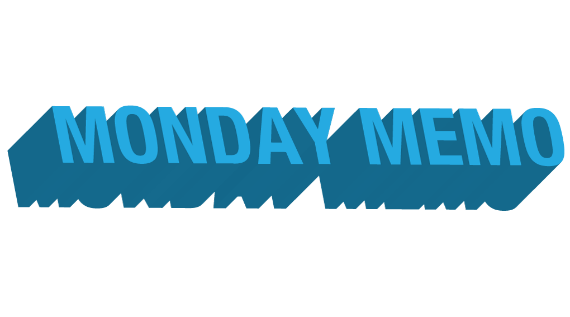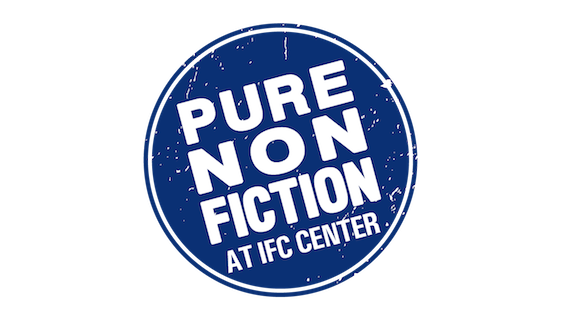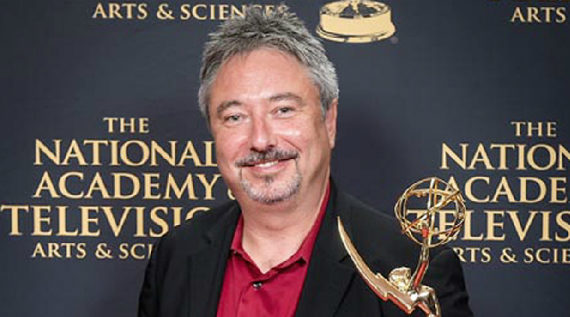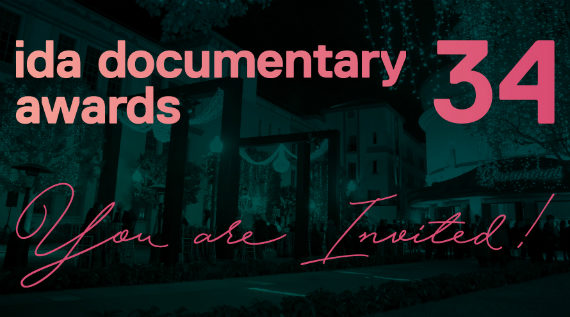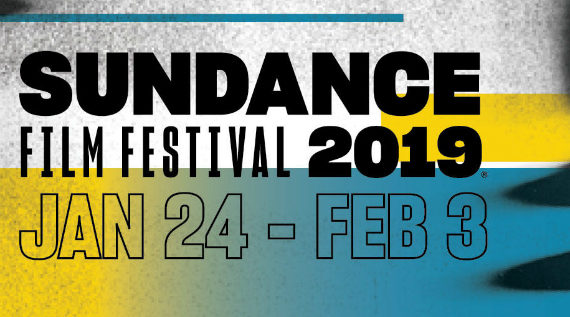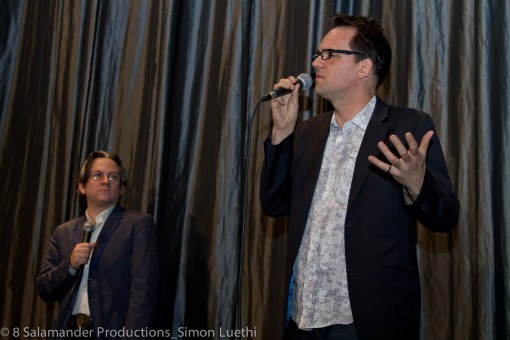
From left, Hugo Perez and director Thom Zimny. Photo by Simon Luethi.
Bruce Springsteen spent part of the three years following the 1975 release of “Born to Run” mired in a legal battle with former friend and manager Mike Appel, and forging a new approach to studio work with his E Street Band compatriots. Relying on footage shot by Springsteen friend Barry Rebo back in ‘75 as well as contemporary interviews, director Thom Zimny in THE PROMISE: THE MAKING OF DARKNESS ON THE EDGE OF TOWN manages to encapsulate Springsteen’s new, iterative songwriting approach. Rebo’s footage is not only a boon in its ability to provide exposition, but also in its dreamy aesthetic—the footage was shot on ¾ inch video that looks as if it exists outside of time. Zimny complements the video with a variety of filmic textures that make THE PROMISE a pleasure to watch. The filmmaker also provides Springsteen fans with the gift of a rare window into the creative process of an artist searching for the right way to record for posterity the poetry his American experience. Following the screening, Stranger Than Fiction friend Hugo Perez spoke with Zimny. Click “Read more” below for the Q&A.
Stranger Than Fiction: Can you tell me about your collaboration with Springsteen? Because it goes back a little ways, and it wasn’t just this film.
Thom Zimny: My first work with Bruce was about 11 years ago and it was in a live concert that was for HBO. At that time, we spent about seven months cutting a live concert from the Garden. In that developed a collaboration that—it’s the same Bruce onscreen, it’s the same Bruce that was there. We explored a lot with HD at that time, and also color correct. That was my first sort of adventure with Bruce and film.
STF: From what we see of these recording sessions, he was kind of a taskmaster and control freak. Did you experience any of that as a filmmaker during the making of this film? Did he sit in?
Zimny: When I look at the archival footage and I also think about the process of making this film, I recognize his commitment. He’s not in the cutting room, just sitting there going through every detail that way. The same Bruce from the ‘78 footage would appear in the cutting room at times to push you to explore something a little bit deeper. We did a couple of interviews, and the first cut he watched was an hour long. We went back and explored some things a little more intensely, and one of the things was the notebook. We realized the notebook could be a character in the film. I think he’s able to look at the details in a film and just push it to another step. I recognize that process of him understanding film and approaching it just the way he approaches his music.
STF: The notebook is a pretty great relic of American pop culture, and it’s just this spiral-bound notebook. Did you get to hang out with the notebook by yourself?
Zimny: Yeah, we scanned every page. And it’s amazing to see because we reproduced it for the box set that comes with the film. As an editor, I relate to it because there are just so many versions of things. A lot of these songs we’re so familiar with, and it was just fantastic to see his writing process, and really see him going through this process of teaching himself how to develop certain themes. And just holding on to what he wanted this album to be. Going through the many versions of “Badlands,” and things like that, it was just an amazing experience.
STF: How many hours worth of stuff were you working with, and is there anything that ended up on the cutting room floor?
Zimny: No, everything made it in [laughs]. You know, I was looking at it tonight, and you go through the process again, remembering cuts, the small details. There’s nothing that haunts me, where I wish I had gotten it in. A lot of the music that I hoped would make the final cut did—these small, little moments. Because they were in the studio and sometimes would only film a minute or something, and it would work as a transition point in the documentary. There’s nothing that’s really haunting me, and I was really happy to get to include the song “The Promise,” which at one point wasn’t in the cut. It helped tell the story, I think.
Audience: Bruce and the band in your contemporary interviews talk about the music in a visual context. When you were interviewing them, was that their recollection, or did you have to guide them to that?
Zimny: The interview process I have with them, it’s very conversational. So I’m not consciously guiding them, saying, this is what I want it to turn out to be. And what’s great about the band—especially Jon and Bruce—a lot of the themes would overlap. The use of the word cinematic, and the approach to the album being that way, each band member brought up. So in the cutting room I had to decide who was going to tell that story. And at times it’s Bruce and at times it’s Jon, or the rest of the band. So there’s no forced themes. I knew I wanted to make a film that was about his artistic process. I wasn’t sure how I was going to put that into the “making of.” So it just unfolded.
Audience: Why did you decide to choose this album to make a film about, and not another one?
Zimny: Actually, I made a film before this about the album “Born to Run.” So that was my first experience working with him, which had some familiar themes with his work process. This was a continuation of exploring each record of Bruce’s. This record, especially, I wanted to get into his writing, and felt like I could do that a lot more because he took a drastic turn at this point in his approach to the writing. This film was really the only time that someone was allowed to film in the studio during the album’s recording. It just made sense to explore Darkness that way.
Audience: Was this a big album?
Zimny: It is. I don’t think it had that big of a hit as say, the album before, which was “Born to Run.” But it did set a tone for him, and he talks about it in the film, where he learned to write a certain way about a certain vision that he had. He’s continued that.
STF: Did you say before that you’re working on a new project with Bruce?
Zimny: I just finished a music video for him that was for his latest album. Which was a completely different journey and experience than the documentary long-form.
Audience: Can you talk about your thought process about how much of Patty Scialfi to include? You don’t touch on their relationship at all, and if you don’t know about the back story between them you might not realize about their romance. I know they didn’t have that during the recording of that album.
Zimny: From my experience in documentary and my experience as an editor, my favorite part in telling these stories is not going down the road of anything sensational. Also, I never considered Patty’s story and Bruce’s marriage. For me, what was a lot harder to get across was Bruce’s creative process. I never really thought about it. She wasn’t really on that album, but I know she had an interesting take on the lawsuit process that no one else had. I had a conversation with her about that. And I thought I’d be asking her about playing the music live, but then she had a great take on the suit. In the cutting room you find these things. Also, for me as a director, the less preconceived notions I have going into these interviews, the easier I can stumble upon a mistake that really works.
Audience: I was wondering if, as a filmmaker, you’ve gotten a chance to see the evolution that he’s gone through over the last 10 years or so. And whether his ability to look back at the ‘70s was something he wouldn’t be able to do five or 10 years ago.
Zimny: I don’t want to speak for him, but I would say I’ve had the experience of being with him with some of the other bands—some of the non-E Street bands. The documentary films have given me an opportunity to be in the studio with him and also document those moments. I hope there’s a sense of trust he shows in terms of dealing with his history, that give me an opportunity to capture him in the studio. Which, for me, is continuing to tell the story. Especially with the Sieger session, the best thing that could happen to me is that he forgot about me with the small crew I had. So you’re able to capture something that you can’t really describe, and you can’t always get on film, which is the creative process.
Audience: In something like this, how do you know when you’re done?
Zimny: That’s a great question. I don’t know. I didn’t know. I think there was a point where it had been four years, and there were points where we weren’t working on it directly. I think for me as an editor, it’s that dangerous point where I’m familiar with stuff, and I want to change it because I’m familiar with the material. That tells me that maybe the film is done. That I’m waiting to see something new so I can create something new. I think the story was in place, and I had to remind myself that even though I’d been living with it for four years, I shouldn’t change something just to make it new. That’s that tricky point where you say, I think the movie’s done, I have to step away.
STF: Can you talk about how your work as an editor might have influenced the way you direct or shoot?
Zimny: As an editor, I’d had that battle with the director. I think in being a director in the documentary films I rely heavily on the interviews, to the rhythm of things. Also, the Bruce interview I’m really thinking about, the tone I’d hoped for as an editor, I felt like I was getting it in the room. It was a rainy, quiet day, we had a small crew, and I knew I wanted to get Bruce onscreen talking for a period of time, where it didn’t feel like it was sound bytes. Where you saw him thinking, where you saw those pauses. So the editor in me was kind of guiding the director at times. A big part of it too, I’ve learned as an editor, I’ve had footage where I felt like the director interrupted a moment, and that’s been a huge influence for me. To let someone start again, and answer twice or a couple of times. I’m constantly going between the brains of editor and director.
STF: This has nothing to do with Bruce Springsteen, but you were an editor on “The Wire,” one of my favorite shows. Just as a fan of “The Wire,” can you talk a little bit about cutting that?
Zimny: It was a great show. It was amazing because the story were so powerful and the schedules were so intense. Also, there’s discipline in telling a story and making sure it’s strong.
Audience: Can you talk about how you came to use the archival footage and the story behind that?
Zimny: Barry Rebo shot the archival footage. I love seeing it projected, it takes on this dream tone. It was shot on ¾ inch tape and it was shot with a camera that was rigged so that there would not be any lights set up in the studio. So it’s almost like a security camera. What I like about the archival footage is that it’s got, like I said, a real dream tone and a feeling of memory. Especially projected, it takes on this other life. They were there for a few days and captured some really great days. And then Bruce shut out cameras from the studio for a really long time. There’s no other footage of Bruce in the studio working. As an editor, the great thing about the footage was to watch it—I thought the story was one thing, and then you watch the archival footage and it guides you. That’s the best part in the cutting room, when you find these small little gems, these details that are telling a different story. One of the moments for me is when Bruce is showing Jon Landau his notebook. As an editor you dream those moments up, and there it was. The archival was transferred and restored. It was really essential for me to tell the story.
Audience: Can you talk about the other footage in the film, the landscape? Where did that material come from?
Zimny: The Super 8 was the hardest part for me in the cutting. Because I didn’t want people to feel like I had bought it. Some of it’s my family’s home movies, and some of it is friends’ home movies. And I would find these awkward moments. But I also looked for Super 8 that had different grains and different exposures. Like when someone’s parent just shot this great thing unconsciously out of a car. I had explored and gathered Super 8, and the one great find I had was from Bruce’s sister, who gave me this Super 8 of him and his dad together. That, to me, was the highlight of finding this archival footage.
[Q&A has been edited for length and clarity]

